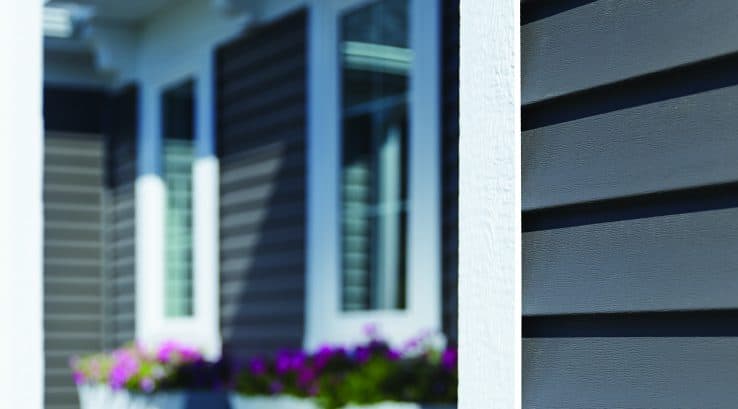Think of it as a raincoat, a winter coat and your home’s protective armor. Your home’s siding does more than just provide curb appeal; it provides your home security and protection against the elements. So, when building a new home or updating your current one, siding plays an important role. Vinyl is the most commonly used material – find out what determines the costs of popular siding materials, including vinyl.
New Siding Cost Factors
When determining how much it will cost to side your home, selecting the type of material will make a big impact.
Vinyl
Vinyl siding is the most commonly used material for new construction and upgrades of your home. That’s because it comes in an array of colors and is the most durable siding material on the market. Vinyl siding is low maintenance, easily cleaned with a power washer or hose and provides protection from the Mid-Atlantic’s fluctuating temperatures and precipitation. Insulated vinyl siding can also help deaden outside noise from entering your home, giving you peace and quiet along with our peace of mind. Its high-rating for energy efficiency means the environment is a fan of vinyl siding as well.
Wood
Wood siding has great aesthetic appeal with a unique natural look. The drawback of wood siding is it can be damaged, infiltrated by insects and can rot. Wood siding requires new staining and repainting and maintenance and repairs to wood siding can be costly. Wood siding costs more than twice that of vinyl siding.
Aluminum
By far the least expensive siding option is aluminum. The siding however can be loud and unattractive and damage easily. Its advantage is that it is can be bent to fit a variety of shapes.
What Factors Determine the Cost of my New Vinyl Siding?
What you love about vinyl siding is its versatility, but it is also the reason why there can be a large fluctuation in price of a vinyl siding job. Here are the things that can determine the cost of your vinyl siding:
- Removal of existing siding. If your siding project requires the removal of current siding expect to pay from $1,000 to $3,000 for that part of the job. At Thompson Creek, removing your old siding also means inspecting your underlayment and wrapping the home with a moisture barrier.
- Vinyl siding thickness. The thinner the siding material, the more susceptible it is to fading, warping and revealing seams. Thicker siding of .052” and more provides protection against those issues plus it has more impact resistance against dings and bangs. Be cautious against low estimates that use thin siding material to keep the cost down.
- Vinyl comes in a variety of options that can mimic stone, wood or other materials. Textured vinyl siding will cost more than the traditional smooth basic version.
- Finishing extras. Putting the finish moldings, trim, cutting out vents and soffits can all add to the price of your vinyl siding project. It’s important to determine if these important finishing pieces are included in your final price quote. Finishing details could add up to $6 per linear foot.
- Size of the home. An obvious but important price definer is the actual square footage of the area that is being sided on your home. Less obvious is the extra cost you will incur for custom cuts to your vinyl siding to match custom windows and doors or other oddly- shaped areas of your home.
What Is The Average Cost of Vinyl Siding?
Vinyl siding can range from $6 to $ 8 per square foot in the Mid-Atlantic region. Assuming an average 2,600 square foot house and you are looking at up to $20,000 all in. That compares to about half the price of other siding options like wood, stucco, stone or brick. At Thompson Creek we give you a free estimate with no hidden costs.
Is Vinyl Siding a Green Choice?
According to the Vinyl Siding Institute, vinyl siding saves homeowners money in its energy efficiency. Vinyl siding installation creates a blanket over wall studs that prevents the transfer of unwanted energy, meaning it helps keep the heat you are paying for in the winter and the air conditioning in the summer inside your home. The R-value, or energy efficiency rating for vinyl siding adds to the overall energy efficiency performance of your home and that saves you money.
The manufacturing of vinyl siding is also done with a keen eye to the environment. Strict environmental standards and reprocessing of scrap vinyl make this siding an environmentally-friendly choice.
Why Choose Thompson Creek Vinyl Siding?
It’s clear vinyl siding is the popular choice for your home and our decades of experience manufacturing and installing it means Thompson Creek is a popular local company to take care of your home’s siding needs.
Our high-grade vinyl siding comes in four different styles with a transferable double lifetime guarantee so you never have to worry about painting, maintaining or replacing your siding. It is 300 percent more impact resistant than traditional siding so it’s built to last. When it comes to siding, Thompson Creek has got your home covered.


